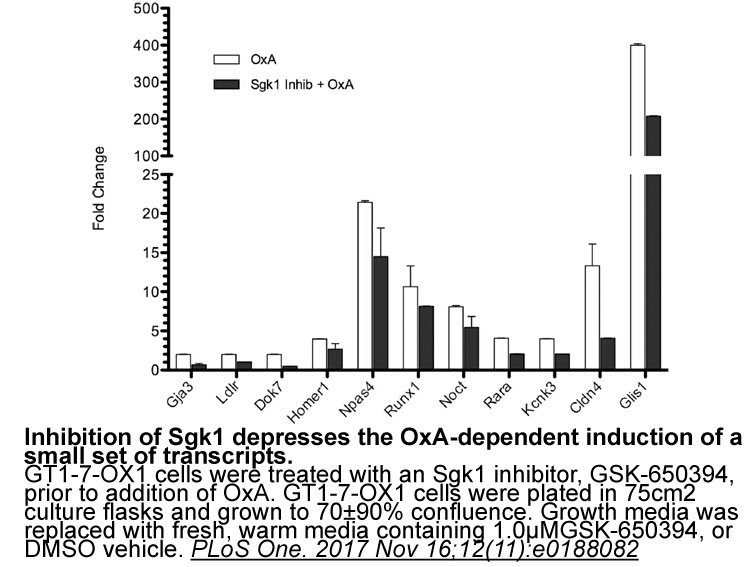Archives
br Conclusions br Author declaration br
Conclusions
Author declaration
Acknowledgements
Introduction
ASK1 scaffolding proteins
ASK1 adaptor proteins
Conclusions
Scaffolding and adaptor proteins can coordinate the specific activation of a MAP3K-MAP2K-MAPK pathway in response to various stimuli. For example, both Benztropine mesylate mg deprivation and UV-C damage activate JNK, but scaffolding proteins selectively signal through ASK1-MKK4-JNK and MEKK1-MKK4-JNK, respectively (Song and Lee, 2007). While the only difference between these signaling pathways is the MAP3K protein which activates MKK4-JNK, this can have important consequences for the cell, as different MAP3K proteins can have different effects on the duration of MAPK signaling. For example, both MEKK1 and ASK1 can activate p38  and JNK in respon
and JNK in respon se to TNFα and H2O2 treatment, ASK1 is required for sustained MAPK activation and subsequent cell death (Tobiume et al., 2001).
Furthermore, because scaffolding and adaptor proteins are critical in orchestrating MAP3K-MAP2K-MAPK interactions, the disruption of these proteins can have significant effects on heath. Due to its strong connection to human diseases, ASK1 activity has been targeted for therapeutic exploration (Hattori et al., 2009, Hayakawa et al., 2012, Soga et al., 2012, Song et al., 2014, Sturchler et al., 2011, Tesch et al., 2016). Loss or inhibition of scaffold and adaptor binding can impair ASK1 downstream signaling, as detailed throughout this article. Indirectly targeting ASK1 activity through modulation of scaffolding and adaptor proteins may offer promising opportunities for pharmacological intervention of ASK1 (Hou et al., 2008, Junn et al., 2005, Karunakaran et al., 2007, Kuo et al., 2007, Niu et al., 2011, Palit et al., 2015, Zhang et al., 2012).
se to TNFα and H2O2 treatment, ASK1 is required for sustained MAPK activation and subsequent cell death (Tobiume et al., 2001).
Furthermore, because scaffolding and adaptor proteins are critical in orchestrating MAP3K-MAP2K-MAPK interactions, the disruption of these proteins can have significant effects on heath. Due to its strong connection to human diseases, ASK1 activity has been targeted for therapeutic exploration (Hattori et al., 2009, Hayakawa et al., 2012, Soga et al., 2012, Song et al., 2014, Sturchler et al., 2011, Tesch et al., 2016). Loss or inhibition of scaffold and adaptor binding can impair ASK1 downstream signaling, as detailed throughout this article. Indirectly targeting ASK1 activity through modulation of scaffolding and adaptor proteins may offer promising opportunities for pharmacological intervention of ASK1 (Hou et al., 2008, Junn et al., 2005, Karunakaran et al., 2007, Kuo et al., 2007, Niu et al., 2011, Palit et al., 2015, Zhang et al., 2012).
Abbreviations
Author declaration
Acknowledgments
Introduction
Doxorubicin (DOX) is a well-established and a highly effective anthracycline used to treat haemotogenous and solid malignancies. However, the clinical use of DOX has been limited by its severe side effects, especially cardiotoxicity and subsequent heart failure [1], [2]. The mechanisms of DOX-induced cardiotoxicity may involve various pathways including oxidative stress, peroxynitrite formation, lipid peroxidation, and alterations of calcium metabolism. In addition, myocardial apoptosis plays a crucial role in DOX-induced cardiotoxicity, which ultimately leads to cardiac failure [3], [4], [5]. Obviously, prevention of cardiomyocyte apoptosis can increase the usage and enhance the efficacy of DOX. There have been many attempts to mitigate DOX-induced cardiotoxicity, including cardiac monitoring, altering the drug properties, prophylactic use of beta-blockers and ACE inhibitors, etc[6]. Although these measures have achieved some successes at present, they still cannot solve the problem ultimately.
Interleukin-33 (IL-33) is a recently described member of the IL-1 family, which was identified as ligand for the ST2 receptor. Components of the IL33/ST2 system were revealed to have cardiac-protective effects in many circumstances [7], [8], [9]. In a pressure overloaded model, IL-33/ST2 signaling was activated to alleviate cardiomyocyte hypertrophy and cardiac fibrosis by inhibiting phosphorylation of inhibitor of NF-κBα and NF-κB nuclear binding activity [10]. In an ischemia/reperfusion (I/R) model, IL-33 reduced cardiomyocyte apoptosis, suppressed caspase-3 activity, and increased expression of the antiapoptotic factors XIAP, cIAP1, and surviving [12]. Our previously study also have demonstrated that diabetes mellitus decreased expression of myocardial IL-33, which increased vulnerability of the diabetic myocardium to I/R-induced injury [13]. According to these previously studies, it is conceivable that the cardiac-protective effect of IL-33 might be extended to prevent DOX-induced cardiomyopathy. So, in the present study, we firstly confirmed the beneficial effect of IL-33 in preventing DOX-induced myocyte apoptosis.